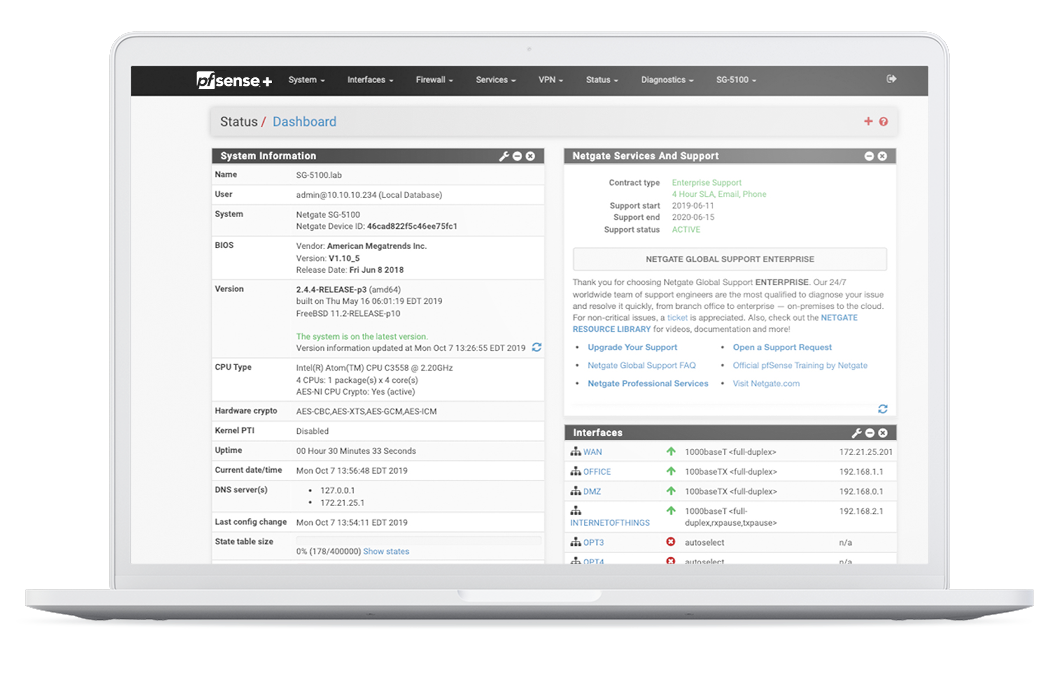Imagine a digital fortress standing guard over your network, fiercely protecting your data from the ever-present threats lurking online. That’s essentially what pfSense firewall software offers – a robust, flexible, and often free (as in beer!) solution for securing your home or business network.
But in a world overflowing with cybersecurity tools, why are so many people turning to pfSense? Because it’s more than just a firewall; it’s a powerful, customizable platform that gives you granular control over your network security.
This article will dive into the world of pfSense, exploring its key features, benefits, and potential challenges. Whether you’re a seasoned network administrator or a curious tech enthusiast, we’ll break down what makes pfSense a compelling choice for building a strong and reliable network defense, empowering you to make informed decisions about your security infrastructure.
pfSense Firewall: Your Robust Open-Source Security Solution
Tired of complicated, expensive firewall solutions? Look no further! pfSense is a powerful, flexible, and free open-source firewall platform. It’s based on FreeBSD, offering a wealth of features for home and business networks.
This software delivers enterprise-grade security without the hefty price tag. From basic firewalling to advanced VPN capabilities and intrusion detection, pfSense has you covered. Prepare to elevate your network defense.
Its intuitive web interface simplifies management, even for those with limited networking experience. Don’t let the technical jargon intimidate you; pfSense is surprisingly approachable. Let’s explore its capabilities!
Unlike proprietary solutions, pfSense grants you total control. Customize every aspect of your security posture to meet your unique demands. This freedom is just one reason for its widespread adoption.
Why Choose pfSense?
pfSense boasts many advantages over traditional firewalls. Its open-source nature means constant community development and security updates. No more waiting for slow vendor patches!
The software is incredibly versatile. It can be installed on dedicated hardware, virtual machines, or cloud platforms. This flexibility adapts to various network environments and budgets.
Cost savings are a significant draw. Ditch expensive subscriptions and embrace a free, yet powerful, security solution. Invest those saved resources elsewhere in your network.
Extensive feature set: beyond basic firewall functions, it provides VPN, traffic shaping, intrusion detection/prevention, and much more. This comprehensive approach to security is its strength.
Key Features of pfSense
pfSense provides stateful packet filtering. It examines traffic and blocks unwanted connections. Protect your network from unauthorized access.
VPN support is robust. Configure secure connections using OpenVPN, IPsec, and other protocols. Enables secure remote access and site-to-site connectivity.
Traffic shaping is included. Prioritize critical applications and limit bandwidth usage for less important ones. Ensures network performance and fair resource allocation.
Intrusion Detection and Prevention Systems (IDS/IPS) actively monitor network traffic for malicious activity. Get alerts and block threats in real time.
Installing and Configuring pfSense

The installation process is straightforward. Download the ISO image, create a bootable USB drive, and boot your hardware. The installer guides you through the initial setup.
The web interface is where you configure pfSense. Access it from any browser on your local network. The intuitive design makes navigation easy.
Set up network interfaces. Assign IP addresses and configure routing. Define firewall rules to control traffic flow. Control which services can be accessed.
Explore advanced options. Customize VPN settings, configure traffic shaping policies, and set up intrusion detection rules. Tailor pfSense to your specific needs.
pfSense Hardware Recommendations
The hardware requirements for pfSense depend on your network size and throughput needs. For small home networks, an old desktop PC might suffice.
For larger networks, consider dedicated firewall appliances. These devices offer optimized performance and reliability. Ensure smooth operation for your network.
Look for devices with multiple network interfaces. This is important for separating your LAN, WAN, and DMZ networks. This enables for better security.
Consider factors like CPU power, RAM, and storage capacity. Over-specifying is better than under-specifying to ensure smooth performance under load. Don’t skimp on essential resources.
Maintaining Your pfSense Firewall
Regularly update pfSense to the latest version. Stay protected against emerging threats and benefit from new features. Keep your network safe.
Monitor system logs for suspicious activity. Investigate any unusual events promptly. Detecting and responding early can stop an attack.
Back up your configuration regularly. This allows you to quickly restore your settings in case of hardware failure or other issues. A quick recovery is essential.
Review your firewall rules periodically. Ensure they are still appropriate for your network’s needs and remove obsolete rules. Regularly maintain security.